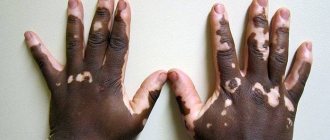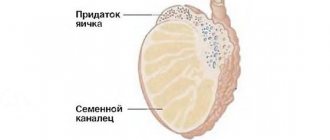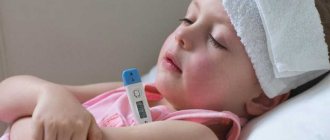Rubella is considered the most common infectious disease among children. The name appeared due to the reddish rash on the body. It most often occurs in a child as a result of untimely vaccination.
A child who has had rubella develops a stable immunity that prevents re-infection. But if the infection passed in childhood, then there is a risk of catching rubella in adulthood. And if children hardly feel its effects, with adult patients everything is much more difficult, since this pathology is accompanied by unpleasant consequences and complications.
The causative agent of the disease and routes of transmission
The causative agent of rubella is extremely contagious. This is a microscopic organism belonging to the Togavirus family, from the Rubivirus genus. If a person who is not immune to this pathogen comes into contact with an infected patient, the probability of illness is more than 90%. That is why the only way to prevent an epidemic of the disease is considered to be early vaccination and revaccination of children.
How long is the incubation period? The maturation time of the rubella virus lasts approximately 15 to 25 days. During this time, the virus undergoes active reproduction and settles in the tissues of the body. The duration of this period depends on the child’s immune system and some other individual characteristics.
Transmission routes:
- airborne;
- contact-household.
That is, you can become infected with rubella by coming into contact with an infected person. Among children, infection occurs through toys, dishes and other common household items.
Even a seemingly healthy child can be a carrier of infection if the virus in his body is in the incubation stage.
What is rubella?
Rubella, also called third disease, is an infectious disease caused by a virus.
It occurs mainly in childhood, like measles and mumps.
The causative agent of rubella
The causative agents of the disease - viral infections of the Rubivirus genus - become more active in the spring and summer, when children go out to play, ride in public transport and in public places with their parents. It is then that pediatricians most often encounter infected patients.
This virus does not tolerate environmental conditions well and dies under the influence of:
- ultraviolet radiation;
- high temperatures;
- a variety of disinfectants.
And when the temperature drops, viral microorganisms, on the contrary, feel great.
Infection is transmitted by airborne droplets from sick children both at the stage of exacerbation and at the stage of recovery when the main symptoms decrease.
After the rash disappears, the child is contagious for about a week , since the release of the rubella virus through the nasopharynx continues. The virus spreads not only through sneezing and coughing, but also through direct contact. In some situations, infection is possible through skin with a damaged top layer.
How rubella manifests itself in childhood
Once the pathogen enters the body, it quickly spreads through the blood to all internal organs and systems. In this case, children experience symptoms such as an increase in the size of lymph nodes in the neck, jaw, armpits, and groin. Usually this symptom is short-term, lasting several days, after which the main manifestations of rubella develop.
It can be very difficult for parents to distinguish the initial stage of the disease in children from a common cold. The onset of the disease is characterized in a young patient by the following symptoms:
- drowsiness;
- loss of strength;
- tearfulness;
- loss of appetite;
- irritability.
These manifestations are more common during the incubation period. With the further development of rubella, the clinical picture worsens sharply. The following symptoms are characteristic of this stage:
- headache;
- the appearance of a runny nose;
- sore throat;
- muscle weakness;
- aching joints;
- pain in the neck, which is associated with an increase in the size of the lymph nodes.
The above symptoms are characteristic of the typical course of the disease.
Immediately after this, the child develops a high fever. It can reach 38 - 40 degrees and last from 3 to 5 days. The cough is usually dry and barking. The nasal mucosa swells, but discharge, as a rule, does not occur.
Rubella - symptoms in children and adults
Classic rubella in children and adults occurs with the development of specific syndromes:
- intoxication;
- lymphadenopathic;
- respiratory;
- feverish;
- exanthem.
Rubella intoxication syndrome in adults and children is manifested by the appearance of malaise, weakness, lethargy, headaches, arthralgia and myalgia, nausea and loss of appetite.
Feverish symptoms are characterized by an increase in temperature and the appearance of chills.
Damage to the respiratory tract is manifested by catarrhal symptoms. Patients are bothered by a slight runny nose and a rare cough. Moderate hyperemia of the posterior pharyngeal wall is also often noted.
Attention. It should be noted that the older the child, the more often he experiences severe catarrhal symptoms (cough and runny nose). In younger patients, cough and runny nose may be absent.
The cough associated with rubella in children is dry and unproductive. With the development of rhinitis, sneezing, nasal congestion and discharge of liquid, transparent contents from the nasal passages are noted.
In isolated cases, with rubella in children, single hemorrhagic elements are observed on the mucous membrane of the oropharynx and pale pinkish spots on the mucous membranes of the soft palate (Forchheimer's spots).
For reference. Conjunctivitis with rubella in children and adults is manifested by inflammatory hyperemia of the conjunctiva, mild swelling of the eyelids, pain in the eyes, increased sensitivity to bright light, increased lacrimation, etc.
Damage to the lymph nodes with rubella in children and adults is a mandatory symptom of the disease. Lymphadenopathy often appears not only before the onset of rubella rash, but also before the onset of catarrhal symptoms.
Normalization of the size of the lymph nodes begins a few days after the rash disappears.
For reference. Rubella in children primarily affects the occipital and posterior cervical lymph nodes. Also, the submandibular lymph nodes are often involved in the inflammatory process. In severe cases of rubella, the development of generalized lymphadenopathy (enlargement of all groups of lymph nodes) is possible.
Lymph nodes in rubella in children are not fused, moderately painful or painless on palpation, dense, mobile. There is no fluctuation syndrome (a sign of suppuration).
The skin over the inflamed lymph nodes is not changed. There is no swelling of the surrounding soft tissues. The size of the lymph nodes can vary from one to two centimeters in diameter (more pronounced enlargement of the lymph nodes is extremely rare).
Lymphadenopathy with rubella in children and adults is benign. Suppuration is not typical and can be observed in isolated cases, when a secondary bacterial infection is associated in patients with immunodeficiency conditions.
In this case, the affected lymph node becomes sharply painful, softening appears in the center and fluctuation syndrome occurs on palpation. The skin over the lymph node is hyperemic and tense.
For reference. Along with the syndrome of lymph node involvement, one of the obligatory and most specific symptoms of the disease is rubella exanthema syndrome (exanthema - rash).
The rash with rubella is small-spotted (less often large-spotted or maculopapular) in nature. The diameter of the small-spotted rashes is five to seven millimeters.
The nature of the rash in the disease
Until the first rash appears on the body in children, characteristic spots can be found on the mucous membrane of the mouth. These are small pimples that gradually merge into areas with a dark red tint.
The process of formation of a rash on the body begins with lesions in the area of the cervical folds, nasolabial triangle, ears, and cheeks. Later, redness spreads throughout the body, and the spots begin to itch. The rash can be most clearly seen on the knees, elbows, and buttocks. The shape of the spots is usually round or oval, the rashes merge with each other.
The disease can be recognized in children by such a characteristic feature as the absence of a rash on the palms, soles and groin area. This is what makes it possible to distinguish rubella from chickenpox, measles, mumps and other pathologies.
Typical symptoms
Rubella in adults, whose symptoms can indicate a mild or severe form, can affect a person's body in different ways. It is on the basis of these signs that the specialist makes a diagnosis and also prescribes a course of necessary therapy.
Typical rubella has the following symptoms:
- Characteristic rash. Initially it appears on the face, and subsequently spreads throughout the body. The rash consists of red spots, 5-7 mm in diameter, rising above unaffected skin. This is caused by the toxic effect of the virus on small blood vessels located near the epidermis. The spots have clear boundaries and do not merge with each other. The rash is most noticeable on the elbows, popliteal fossae, lower back, buttocks, and upper back. After 2-3 days, the spots disappear without leaving any traces.
- Low-grade fever. A person feels a slight malaise, which is expressed in muscle aches and general weakness. Body temperature stubbornly remains at 37 degrees. But in some cases, an increase of up to 40 degrees is diagnosed, and the temperature cannot be brought down by any antipyretic drugs.
- Increased size of lymph nodes. 2-3 days after infection, the cervical, occipital, parotid, and inguinal lymph nodes become inflamed. Moreover, no definite dependence on the development of the pathological process can be traced. When palpating the inflamed areas, pain is felt.
The figure lists the symptoms of rubella in adults.
- Headache. In 90% of diagnosed cases, rubella in adults is accompanied by migraine attacks. Even painkillers cannot relieve the pain. This symptom significantly affects the patient’s well-being and completely unsettles him.
- Signs of a cold. The patient has a runny nose and constant nasal discharge. After damage to the larynx, a dry cough and sore throat appear. When the virus spreads into the conjunctiva, lacrimation, pain in the eyes, and photophobia appear.
- Spots on the palate. Subsequently, the patient experiences the same rash in the mouth as on the body. However, no pain occurs upon palpation.
In men, when the rubella virus penetrates, pain in the testicles may occur. To reduce discomfort, it is recommended to adhere to bed rest. But during the recovery process, the painful symptom goes away without causing any harm to health.
Is it possible to independently distinguish rubella from other more dangerous diseases?
It can be very difficult to independently determine rubella in children at home, because its symptoms may differ from the typical course. The disease may not begin with signs of a cold, but may be accompanied by uncharacteristic symptoms such as vomiting, diarrhea, and nausea. That is why it is not recommended to make a diagnosis yourself. If there is a suspicion of illness, the baby should be shown to a pediatrician.
You may be interested in: Enterovirus infection: symptoms and treatment in a child
At the doctor’s appointment, the mother must answer the following questions to the specialist:
- whether the child was vaccinated against rubella, and what the reaction was;
- whether the little patient came into contact with an infected person;
- does he attend kindergarten or school?
- whether the mother has recently had rubella or during pregnancy.
This information will help the doctor make a diagnosis.
Children who attend kindergarten and school but have not received the vaccine are at greatest risk of the disease. Children under one year old get sick less often, as they spend less time in crowded places and do not visit child care institutions. In adults, rubella can be more severe and often cause complications. This is why it is so important to vaccinate your baby within the period indicated by the vaccination calendar.
Rubella - symptoms in adults
The main symptoms of the disease in children and adults do not differ. In vaccinated adult patients, the disease also occurs predominantly in mild or asymptomatic forms.
In this regard, it is necessary to emphasize the importance of screening for rubella antibodies for women planning pregnancy. Because in case of contact with a rubella patient, a woman who has had the disease in an asymptomatic form may not be aware of the risks of developing congenital pathologies in the fetus.
For reference. In unvaccinated adult patients, the disease can be severe, accompanied by the appearance of a profuse confluent rash, joint pain, severe fever and intoxication, and generalized lymphadenopathy.
Stages of pathology
There are several stages of rubella. These include the incubation period, during which clinical signs are absent or least pronounced, and the prodromal period, characterized by symptoms reminiscent of a cold - fever, dry cough, general deterioration, and the appearance of rashes. The last stage is recovery. There is a decrease in all manifestations, improved appetite, normalization of body temperature and other vital indicators in children.
How rubella vaccination is tolerated at 1 year of age, reaction
Not all mothers and fathers know the peculiarities of the manifestation of rubella in one-year-old children, and this is the most common cause of confusion and incorrect treatment. At first, in one-year-old children, the disease is similar to diathesis and other skin diseases, since the symptoms are not pronounced. But the main responsibility of parents is to monitor the dynamics of the rash in terms of quantity, size characteristics and appearance. Therefore, it is important to diagnose on time and take preventive measures in the direction of complications that affect internal organs.
The general condition of a sick one-year-old child can be assessed using several factors.
- The infection appears at 1 year of age if vaccination has not been given.
- The risk of morbidity is especially frequent in winter and spring.
- If infected persons are identified among the baby's contacts.
- Unstable persons are children between 1 and 4 years of age.
- If there is a risk of congenital infection.
Rubella in children, photos of which are presented in the material, involves several diagnostic difficulties, which is associated with infection during the incubation period, which lasts up to 21 days. Already from the second day of infection by a sick person, an active entry of the viral strain into the environment occurs. The reaction to a vaccination given at one year of age is a condition similar to the effect of a mild infection. Side effects may occur in the form of increased body temperature and general malaise; parents are required to concentrate maximum attention on the child’s health.
Diagnostics
Due to the long incubation period of rubella, diagnosing the disease is quite difficult. It is worth noting that the virus begins to be transmitted from infected children to healthy ones already on the second day, that is, there are no signs of the disease yet, but the patient is already acting as a source of infection. It is especially easy to get rubella in crowded rooms, gardens, schools, and hospitals.
Diagnostics include:
- examination of the child by a pediatrician;
- assessment of the condition of the oral mucosa and skin;
- palpation of lymph nodes;
- prescribing a serological blood test, which helps identify antibodies formed during the disease;
- general blood test with determination of the number of leukocytes, erythrocytes, platelets and other formed elements.
Usually these measures are sufficient to identify pathology and prescribe the necessary treatment.
Rubella during pregnancy: symptoms, treatment
The disease poses a serious danger for girls who are preparing to become mothers, because it can provoke adverse consequences for the fetus . The infection easily penetrates the placenta, causing a variety of complications in the development of the baby. The 1st and 2nd trimester are especially vulnerable .
The first thing that is negatively affected by the disease is the central nervous system, heart, organs of vision and hearing. Children who were born with congenital rubella syndrome may also suffer from diabetes, autism, and problems with the thyroid gland. Moreover, a child for 1-2 years can be dangerous to other people, as transmission of infection is possible.
In late pregnancy
When the 3rd trimester , the risk that the fetus will acquire any severe malformations is significantly reduced. But still, at least a small danger exists.
Also a terrible consequence for pregnant women is the possibility of miscarriage and stillbirth. Such cases occur quite often in medical practice.
All therapeutic measures that are used to treat the disease are not prescribed to women in an interesting situation, because they are not able to avoid infection of the fetus. In the event that bacteria do penetrate the baby’s body, doctors decide whether to terminate or continue the pregnancy.
If this happened early
The likelihood of complications in the child is maximum; the woman is advised to terminate the pregnancy. If the date is already late, then they try to leave the fruit. However, if the infection of the baby is confirmed, then it is also advised to have an abortion. If a decision is made to keep the child, the expectant mother is simply registered in a high-risk group. Then they constantly monitor her.
Next, specialists carry out therapy for fetal hypoxia and placental insufficiency. They carry out preventive measures and prescribe treatment to generally strengthen the body. All this helps prevent the occurrence of malformations, as well as avoid spontaneous abortion.
Pathology not only harms the child, it can complicate the course of childbirth. Labor is disrupted, which can lead to blood poisoning and bleeding. Rash photo
Differential diagnosis
Since rubella in boys and girls often has a very similar course to other diseases, differential diagnosis is carried out. Here the difference is sought with the following diseases:
- measles, which occurs in children with more pronounced symptoms, can manifest itself in the form of high fever, gradual development of a rash, and severe catarrhal manifestations;
- scarlet fever, characterized by smaller spots, absence of rashes in the area of the nasolabial triangle;
- infectious mononucleosis, which can begin with a sharp enlargement of lymph nodes, fever, sore throat;
- infantile roseola - accompanied by a body temperature of up to 40 degrees for three days, after which it normalizes and a rash appears on the body.
Differential diagnosis is necessary to make a diagnosis and select the correct treatment tactics.
With an atypical course of rubella in children, the rash may appear as slight redness of the dermis. Mothers often confuse it with diathesis, prickly heat, or allergies in their infants.
The first signs of rubella
Symptoms of rubella in a child or adult appear rapidly one after another, and they are very easy to confuse with acute respiratory infections. Measles disease is especially dangerous for women - if they become infected in the early stages of pregnancy, intrauterine fetal death may occur. How rubella begins:
- First, the following symptoms appear: nasal congestion, sore throat, weakness, drowsiness, fever.
- Next, enlarged lymph nodes and their swelling become noticeable. Pain is noted on palpation.
- The most characteristic symptom during diagnosis is red spots.
Classification of the disease
Depending on the route of infection, rubella is divided into acquired and congenital types. In the first case, we are talking about infection from a carrier of the virus. Anyone can get sick - infants, preschool and school-age children, and even adult men and women. In the second option, the disease is transmitted to children through the mother's placenta. Moreover, its course is very dangerous, often causing serious consequences, damage to hearing, vision, heart and other internal organs. If this condition is not treated, the prognosis for the newborn is extremely unfavorable.
You might be interested in: Symptoms and treatment of laryngitis in a child
Complications of rubella
In most cases, the disease is characterized by a benign course and is rarely accompanied by the development of complications. Rubella poses the greatest danger to women carrying a child and immunocompromised patients.
In unvaccinated adults, the most common complications are benign arthritis, which disappears a few days after the rash disappears. Deformation of the joints, purulent inflammation of the joints and joint capsules, as well as limitation of joint mobility are not observed.
In more rare cases, the disease can be complicated by thrombocytopenic purpura, neuritis, polyneuritis, sinusitis (due to activation of secondary bacterial flora), nephritis, etc.
Attention. The most severe complication of rubella is rubella encephalitis. This condition is accompanied by the development of convulsive symptoms, paralysis, coma, etc. If not treated promptly, rubella encephalitis can cause death.
With congenital types of the disease, the development of subacute rubella encephalitis is possible.
Features of the course of the disease in infants
Newborn babies can also get rubella if they come into contact with an infectious person. At risk are children who regularly interact with older brothers, sisters and parents who did not receive vaccinations in childhood, but they never had the chance to get sick with this insidious disease.
In infancy, the disease is easily tolerated, especially among breastfed children. Despite this, the first thing parents should remember is that the disease in a young patient should be treated only under the supervision of a doctor.
In infancy, rubella can manifest itself in the form of the same symptoms as in older children. Its signs include:
- loss of appetite;
- tearfulness;
- abnormal stool, vomiting;
- temperature increase;
- appearance of a rash.
Treatment in children is carried out by alleviating the clinical signs of the disease with the help of medications, following a diet and drinking regime, and treating sipi with special means, which we will talk about later.
In children under one year of age, the most common form of rubella is an atypical one, in which the signs are mild or some of them are absent.
Subclinical form of rubella
Rubella in adults, for which there are no symptoms, is considered to be a subclinical form of the disease. In this case, the patient has no idea about the presence of the virus in the body. At the same time, it is dangerous for others, as it remains a source of further spread of infection.
Subclinical rubella is diagnosed 4 times less compared to typical rubella. A doctor is able to recognize pathology only by prescribing an examination for a person in contact with the patient.
Treatment options for children
What should parents do to alleviate their child’s condition? A necessary condition for the treatment of rubella is timely diagnosis of the disease and the prescription of competent drug therapy. To do this, you need to visit the hospital and undergo the necessary tests.
In addition to taking medications, the baby needs proper care from the mother, since this pathology, if uncomplicated, is usually treated at home. Hospitalization and nursing care may be necessary for various complications that require medical supervision.
Use of medications
There is no specific treatment for rubella among children using medications. The action of medications is aimed primarily at eliminating symptoms. Medicines are selected depending on the clinical picture of the young patient. The following drugs are used:
- antipyretics – Paracetamol, Nurofen, Ibuprofen. For children in the first months of life, it is better to use medications in the form of rectal suppositories. This form is more convenient at this age and is less likely to cause side effects;
- antiallergic drugs - help eliminate muscle and joint pain, severe itching. Suprastin, Diazolin, Zyrtec are prescribed here. With them, the baby will be much easier to endure the disease;
- for conjunctivitis, Albucid will be effective;
- Regular baby creams and oils, which should be applied to the affected skin several times a day, will help reduce dryness and inflammation of the skin. Usually the rashes do not require separate treatment and do not leave scars or age spots on the body.
Any medications against the manifestations of the disease should be used in strict accordance with the instructions for use and only as prescribed by a doctor.
How to bathe a baby correctly
Many parents, faced with rubella in their child, are concerned about the question of what to do to relieve the itching and is it possible for the baby to wash himself? At the initial stage of the disease, it is better to exclude water procedures; doctors recommend waiting until the temperature drops, after which you can prepare a bath for the little patient with a decoction of herbs (chamomile, string, St. John's wort). Bathing will help you cope with rashes faster, prevent the addition of a bacterial infection, and alleviate the symptoms of the disease during treatment. In this case, you should wash the areas affected by the rash very carefully, without using a washcloth.
Features of the daily routine and nutrition
Maintaining a daily routine and a healthy diet is a necessary condition for recovery, because during this period the child’s body needs special care and light nutrition. The following recommendations will help defeat rubella and prevent the development of complications:
- food should not contain large amounts of carbohydrates and animal fats. Preference should be given to cereals, vegetable soups, fermented milk products, baked vegetables, fruits;
- The child must drink enough water during treatment. This will help prevent dehydration and remove harmful waste products from the body;
- medications should be used in strict accordance with the doctor’s recommendations;
- it is necessary to regularly change bed linen and ventilate the room in which it is located;
- Children can take walks after the temperature drops, while avoiding contact with other people.
You might be interested in: How to apply chickenpox to a child
By adhering to these recommendations, parents will help their child cope with the disease faster and easier.
The menu for a child with rubella should be based on the age of the little patient and his taste preferences. In the table you can see useful and harmful foods for children with illness:
| Recommended dishes | Prohibited Products |
| Porridge – buckwheat, oatmeal, rice, wheat | Fast food |
| Fermented milk products – kefir, yogurt, fermented baked milk, yogurt | Pastries, cakes, pastries, lollipops |
| Lean fish and meats | Chips, chocolate bars, nuts |
| Vegetables – carrots, beets, potatoes, cucumbers, tomatoes, cauliflower, broccoli | Smoked meats, marinades, hot spices, seasonings |
| Dairy products - sour cream, butter, low-fat cottage cheese | Fatty fish and meats |
| Soft-boiled eggs, no more than one per day | Fried eggs, pasta |
| Fruits – apples, bananas, apricots, peaches, citrus fruits in limited quantities | Dishes with added margarine |
| Green tea, rosehip decoction, compotes, natural juices | Coffee, strong tea, carbonated drinks, juices with preservatives |
If the child is breastfed, the problem disappears. Breast milk contains all the necessary components that will help the body quickly cope with rubella.
Incubation period
There are several stages or periods of rubella:
- incubation;
- premonitory;
- spread of rash;
- recovery.
The incubation period begins when the virus enters the body. The causative agent of the infection affects the lymph nodes, into which it enters through the bloodstream. The incubation period lasts from 16 to 22 days (in some cases the duration can be from 10 to 24 days). During this period, when the virus actively multiplies and circulates through the bloodstream, the disease can only be diagnosed by enlarged lymph nodes behind the ears and on the neck. 5-8 days before the end of the incubation period, a person becomes infectious.
Vaccination of children
Recently, many mothers have refused vaccinations, believing that vaccination can lead to serious consequences. On the forums you can actually find negative reviews from parents about some types of vaccinations. This position is fundamentally wrong, because by refusing the vaccine, they expose the baby to a much greater risk. Only timely vaccination can form artificial immunity in a baby to this disease and prevent an epidemic.
The main condition for vaccination is that it should be given to a healthy child. For this, the baby should be prepared, chronic diseases treated, and given an antiallergic drug.
The first rubella vaccination is given at one year of age. At six years of age, revaccination is carried out. In both cases, the vaccine includes a triple component against measles, rubella and mumps.
After the procedure, the child may experience a temporary reaction in the form of enlarged lymph nodes, tearfulness, and fever. These are normal symptoms and do not require treatment.
How to treat rubella in children of different ages?
Despite the fact that rubella is an infectious disease of viral etiology, it does not require specific treatment. This is explained by the fact that when it manifests itself, the body begins to produce antibodies that can cope with the problem on their own. Nevertheless, children, regardless of age, need to strengthen their immunity during illness. For this purpose, vitamins are prescribed. Symptomatic treatment of rubella includes the use of antipyretics and antihistamines. During illness, it is necessary to maintain a hospital or home regime to avoid the spread of infection.
Prevention of rubella
Prevention of the disease lies in its timely vaccination. This is the only way to 100% prevent the disease. In addition, during the autumn-winter period it is recommended to avoid crowded places and wash your hands often with soap. Educational institutions, hospitals and other crowded places must be cleaned several times a day using special disinfectants. The child should be taught not to put his hands in his mouth or touch his face with them. In kindergartens, toys and utensils should be thoroughly washed in rook water and soap. If a child is sick, he cannot be sent to the group. If a woman is pregnant but has not received the vaccine, she is advised to avoid any contact with infected people.
Treatment of rubella
The main methods of treating rubella are isolation of the infected baby, bed rest and control of symptoms of the disease.
Rubella can also be treated at home; only seriously ill children are hospitalized. The child must remain in bed .
Drinking plenty of fluids is recommended. There are no specific medications against rubella, and the course of treatment is determined based on its type and degree of complexity.
About every second child infected with the rubella virus does not show any signs of illness. And even if rubella causes symptoms in children, they are rarely severe. After about 1-2 weeks, complaints usually disappear completely.
Since a specific treatment has not yet been developed, pediatricians recommend:
- bed rest for 3-7 days;
- nutritious nutrition , taking into account the age characteristics of the child;
- the use of disinfectants (arbidol, isoprinosine), immunomodulators (interferon, viferon) and immunostimulants (cycloferon, anaferon);
- detoxification therapy - drinking plenty of fluids ;
- taking ascorutin 500 mg 3 times a day (replenishes vitamin deficiency);
- children's anti-inflammatory drugs : Paracetamol, No-spa, Nurofen (used to relieve fever, headache);
- To clear sputum and get rid of the virus as quickly as possible, children's expectorants (NOT antitussives!) are recommended.
Principles of treatment of rubella in children under 1 year of age:
Treatment is provided on an outpatient basis , parents receive a sick leave certificate, which is valid for 21 days, i.e. for as long as the child is considered a carrier of the virus.
At this time, the child is isolated from other children to prevent the spread of infection. Basic requirements for successful treatment:
- the child is placed in the infectious diseases department with the possibility of regular ventilation of the room;
- During the week, bed rest is established; it is important that the child drinks a lot of water and eats properly.
How is rubella transmitted?
How is rubella transmitted? The source of the pathogen is a sick person or a patient with an erased, asymptomatic form of the pathology. Doctors distinguish 2 ways by which the rubella virus is transmitted:
- Airborne.
- Vertical - from mother to fetus.
The causative agent of rubella can enter the body through shared toys or pacifiers. When transmitted through the air, the patient becomes infected during communication with a sick person or even staying in the same room.
How is rubella transmitted from mother to child? The virus is able to penetrate the fetoplacental barrier and affect the baby’s body, causing serious disorders. Depending on the mechanism of transmission of rubella, the clinical picture and prognosis for the patient differ.
Diagnostic methods
Detecting the disease in children is usually not accompanied by difficulties. It is enough for an experienced doctor to examine a small patient, study the clinical picture and his anamnesis. After this, appropriate treatment is prescribed.
To diagnose the disease in adults, including pregnant women, a more serious examination will be required. It includes the following activities:
- Serological analysis. A diagnostic test for immunoglobulins M and G can tell a lot. For example, an increase in these titers indicates the development of a pathological process. IgM is checked approximately 10-12 days after infection. When the titer increases 4 times or more, rubella is diagnosed. For preventive purposes, such an analysis is prescribed for pregnant women and those in contact with sick people. When IgG is detected immediately, antibodies to the virus are present in the body. IgGs last a lifetime.
- Virological research. Allows you to detect the presence of an infectious agent in the body. The analysis is informative only before the initial rash appears. Not only blood is suitable as a test material, but also nasal discharge and amniotic fluid.
- PCR method. Using polymerase chain reaction, the rubella genome can be detected.
To exclude other pathologies with a similar clinical picture, comparative diagnostics are performed. The infection is differentiated from measles, scarlet fever, mononucleosis and allergies.
Complications
In recent years, the incidence of rubella infection in adults has increased.
With rubella in people over 20 years of age, the following serious complications are possible:
- Artiritis.
- Encephalitis or meningoencephalitis.
- Otitis.
- Convulsive syndrome.
- Pneumonia.
The risk of negative consequences is higher if you treat the disease yourself. Rubella is especially dangerous for pregnant women - infection in the first trimester is an indication for abortion. With transplacental infection of the fetus, the likelihood of developing defects is very high, since the hearing organs, nervous system, internal organs and hematopoietic organs are affected. The likelihood of intrauterine fetal death increases several times. Rubella in later stages has less of an impact on the baby's development - monitoring the condition of the fetus and prescribing immunoglobulins is required.
Prevention
A measure of specific prevention of rubella is vaccination with live immunobiological preparations containing rubella viruses. mumps and measles, or means in the form of a monovaccine. Vaccination is carried out in two approaches - the first vaccination is given to children aged 15 months to one and a half years, the second - during adolescence, to children 12-14 years old (especially girls) . For women of childbearing age who were not sick in childhood, revaccination is recommended when planning pregnancy.
Types of rubella and their characteristic manifestations
There is no generally accepted classification of rubella, but doctors distinguish the following clinical forms of the disease:
- acquired: typical, atypical (without rash), inapparent (subclinical);
- congenital.
Typical acquired rubella is mild in most episodes and is not accompanied by a significant deterioration in health. In 48% of children, body temperature rises to subfebrile, in 30% it fluctuates between +38...39°C, in the rest it remains normal.
In almost all patients, fever persists for 2-4 days.
Acquired form
Typical signs of the disease are moderate lymphadenopathy and catarrhal inflammation of the upper respiratory tract. The serological method, i.e., an enzyme-linked immunosorbent test, helps to recognize the atypical and subclinical forms.
Congenital form
It is observed in children whose mothers were ill during pregnancy.
It is accompanied by eye damage (cataracts, microphthalmia, corneal opacities), heart defects (pulmonary stenosis, ventricular septal defects), deafness, mental retardation, microcephaly. Additional manifestations include intrauterine growth retardation, bone lesions in the metaphyseal region, enlarged spleen and liver, thrombocytopenic purpura, myocardial necrosis, interstitial pneumonia, and myocarditis.
Some children show signs of cellular and humoral immunodeficiency. This type of disease can develop even after the mother has had asymptomatic (inapparent) rubella.
Treatment
Medications, the main components of which would be active against the virus, have not been developed to date. In severe cases, the doctor prescribes complex symptomatic therapy aimed at alleviating the patient’s general well-being and relieving the main clinical manifestations of the disease (fever, headache, manifestations of ARVI, and so on).
Treatment of rubella in adults is largely based on compliance with the doctor’s recommendations on the patient’s daily routine, dietary rules, and drinking regimen. After visiting a doctor and making a diagnosis, you must:
- isolate the patient, minimizing his contacts with loved ones;
- maintain bed rest in the acute phase of the disease;
- ventilate the room in which the patient is located at least every 4 hours;
- reduce the level of light in the room where the patient is located as much as possible;
- Provide the patient with plenty of fluids and rest.
Medicines
Adult patients with severe rubella are recommended to take medications from different pharmacological groups, depending on the severity of one or another symptom. As prescribed by a specialist, it is possible to use:
- Antipyretics in the form of tablets or injections. Used when temperatures rise above 38°C. It is possible to use products based on paracetamol or ibuprofen. If oral administration of a daily dose of 500 mg is ineffective, you can proceed to intramuscular injections.
- Desensitizing drugs. Application is aimed at relieving swelling of the mucous membranes and preventing the development of allergic reactions. Antihistamines (Loratadine, Levocytirizine), diphenhydramines (for example, diphenhydramine) are prescribed.
- Immunomodulators based on interferon (Viferon, Leukinferon) or specific immunoglobulin. These components prevent the introduction of the rubella virus into cells, suppress its reproduction, and stimulate natural immunity.
- Painkillers and anti-inflammatory drugs. Prescribed for severe febrile syndrome and severe headache, oral administration is recommended. The drugs of choice are aspirin, ibuprofen, diclofenac and other drugs from the group of NSAIDs (non-steroidal anti-inflammatory drugs).
- Vitamin C, both in the form of preparations and in natural form (citrus juices, cranberries), to stimulate the immune response.
- Antiviral (for severe cases) (Isoprinosine, Arbidol, Remantadine).
- Expectorants for wet coughs (mucolytics, Erespal), drugs Sinecod, Codelac or their analogues for dry coughs.
- For conjunctivitis - Albucid in the form of drops or its analogues.
- If the development of dangerous neurological complications, fraught with lightning-fast progression and death (for example, meningoencephalitis), is suspected, the patient requires hospitalization and is prescribed prednisone and dehydration therapy.
- Sedatives for severe cases and severe febrile syndrome.
Article on the topic: Causes and first symptoms of a microstroke - how the signs differ in women and men
Diet
Following the rules of nutrition during an adult’s illness will ease its course and speed up the recovery process. For rubella, doctors recommend dietary table No. 13. This diet is based on reducing the energy value of the diet to 2000-2100 kcal per day by reducing the percentage of fats (60-70 g/day) and carbohydrates (no more than 300 g, 30% easily digestible), proteins - up to 70 g, mainly dairy. The frequency of meals is increased to 6 times a day, no more than 350 kcal per meal. Excluded from the menu:
- fatty meat, milk;
- baked goods – white bread, pasta
- high concentration broths;
- spicy food (sauces, seasonings);
- legumes;
- fried, smoked, canned foods.
Food is steamed or boiled; the daily diet must include vegetables and fruits, easily digestible cereals, lean meats or fish, vegetable oil or butter (no more than 15 mg). Be sure to consume foods high in vitamin C (currants, sea buckthorn, citrus fruits) , A (liver, egg yolks, butter), B2 (cottage cheese, almonds), B6 (potatoes, rice or millet, red meat).
The drinking regime during rubella should be at least 2.5 liters of fluid per day. Drinks can be warm (for a sore throat) or at room temperature; preference is best given to plain water, freshly squeezed natural juices or sour fruit drinks made from cranberries or lingonberries, and herbal infusions. During the period of illness, coffee, alcoholic drinks, strong tea, and fermented milk drinks are excluded .
Folk remedies
The use of folk remedies during rubella is possible as additional therapeutic measures. Experts suggest using the following treatment methods for adult patients:
- Local therapy aimed at relieving skin itching and reducing the likelihood of developing an allergic reaction: dilute half a glass of soda with boiled water at room temperature to a homogeneous thick ointment (2-3 tablespoons of liquid). Apply two to three times a day (morning, afternoon and evening) to the skin, on irritated rash spots, for 10-15 minutes. Continue until the itching or rash disappears.
- Immuno-strengthening berry fruit drinks: mix lingonberries with dried rose hips in a ratio of 1/1, 2 tbsp. pour the resulting mixture into 0.5 liters of boiling water in a thermos and leave for three hours. Take half a glass every three hours, 7-10 days.
- A decoction of medicinal herbs: a mixture of dry raw materials of wormwood, yarrow, coltsfoot leaves, string and dandelion roots (1 tablespoon of each ingredient) is poured into 0.5 liters of boiling water and infused for 20 minutes. The resulting liquid is filtered, taken before meals 3-4 times a day, 3 tablespoons, until the rash disappears.
- A decoction of a mixture of dry wormwood, nettle leaves, currant leaf, dried motherwort herb and violet blossom. Grind the components and mix in equal proportions. 2 tbsp. l. vegetable raw materials, pour 0.5 liters of boiling water, leave in a thermos overnight, strain in the morning. Take daily, 2-3 times a day, regardless of meals, 3 tbsp.
- A decoction of coltsfoot herb (1 tbsp), dry linden blossom (2 tbsp) and honey (1 tbsp). The mixture is poured with 2 cups of boiling water, left for 1 hour, brought to a boil and kept on fire for 5-7 minutes. Then filter the drink, take 1 glass before bed for 7-10 days or until the skin rashes disappear.
- Vitamin tea. The drink is brewed with dried rose hips, raspberries, lingonberries, and black currants. Any of the listed ingredients are mixed in equal proportions and brewed with boiling water in a kettle or thermos. You can take the product without restrictions, without adding sugar, until recovery and for a week after it.
Rubella virus and its features
The rubella virus is an RNA virus. It is very unstable in the environment, that is, it dies quite quickly under the influence of high temperatures and treatment with various antiseptic solutions. However, the rubella virus can survive for quite a long time at low temperatures and can withstand freezing down to -60-70°C for several weeks. It causes disease in humans and in some animals (monkeys, rabbits).
The rubella virus infects cells of various organs and tissues in the human body, including that it is very comfortable in the cells of the embryo, that is, the fetus. When a pregnant woman is infected, the virus penetrates the placenta to the fetus and causes various serious developmental abnormalities in it, which is especially dangerous in the first trimester.
Causes of the disease and routes of infection
Rubella is a highly contagious disease. Its causative agent is a virus of the togavirus family, highly resistant to external influences, with a size of 60-70 nm. Outwardly, it looks like a ball with many fibers on the shell. With their help, it attaches to cells, destroys them and promotes the adhesion of red blood cells. In this case, the virus is capable of infecting human nervous tissue.
Infection occurs through airborne droplets or household contact from person to person. There are several sources of infection:
- a sick person with all the symptoms of infection;
- children with congenital rubella;
- in utero from a sick mother to the fetus through the placenta;
- patients with an atypical form of infection that is asymptomatic.
The virus spreads in large groups, especially children's groups. In the absence of specific immunity, the risk of infection is about 90%. This microorganism enters the external environment during coughing, sneezing and breathing. It can retain its properties for 5-8 hours. This togavirus dies under the influence of ultraviolet radiation, at a pH level of up to 6.8 and more than 8.0, under the influence of formaldehyde and disinfectants.
The main cause of the disease is the penetration of the rubella virus into the human mucous membranes, from where it spreads through the blood throughout the body. The main risk factors for the disease are the following:
- decreased immunity;
- children's groups;
- lack of vaccination.
Most often, outbreaks occur in spring and autumn.
Features of the pathological process in adults
In adulthood, the symptoms of the disease are more pronounced. As a rule, the body reacts very violently to the penetration of the virus. If a child calmly tolerates rubella “on his feet,” then an adult needs bed rest for a week.
Among the main complaints with which patients consult a doctor are an increase in temperature up to 39 degrees, joint pain and increasing weakness. The initial stage of rubella is often accompanied by an increase in the size of the spleen and liver, which is detected by palpation. Auscultation of the heart often reveals dullness of its sounds.
Photophobia and lacrimation appear. The characteristic rubella spots have a tendency to merge together. However, the papules do not have clear boundaries. They usually appear over large areas - in the back and buttocks. If left untreated, the disease can lead to damage to the joints of the hands and even encephalitis.
Anti-epidemic measures for rubella
Despite universal vaccination, which is still the most effective preventive measure, outbreaks of the disease occur every 10 years in various regions.
What anti-epidemic measures are taken for rubella?
- General measures in foci of infection are ineffective, since the incubation period of the disease is long and there are hidden forms of the disease.
- According to some sources, a child becomes contagious a week before the rash appears and 1–2 weeks after it. In most cases, on the fifth day from the onset of the rash, the virus is not released into the environment. Plus, in order to become infected, you need long-term contact with someone who is sick. Therefore, the child is isolated until the fifth day from the moment the rash is discovered.
- No quarantine is announced.
- Is it possible to walk with rubella? It is better to avoid walking until the fifth day inclusive from the moment the rash appears, so as not to infect others. At this time, the room where the patient is located is frequently ventilated. If the child lives in the private sector or falls ill while staying at the dacha, walks are allowed within the designated area.
- Is it possible to bathe a child with rubella? If the disease is mild, there are no complications or severe itching, you can swim, but it is not advisable for the child to stay in the water for a long time. Swimming for 5-10 minutes or taking a warm shower is optimal evening exercise. There are often foreign impurities in the water that will aggravate some symptoms. During the period of illness, you should not swim in reservoirs until complete recovery.
Diagnosis of rubella
1. The diagnosis is based on the nature of the rash, the timing of its appearance, the simultaneity of the rash and localization, and the epidemic situation. But you should not rely on your life experience, because there are many other similar diseases with similar symptoms: measles, scarlet fever, pseudotuberculosis, enteroviral exanthema, chicken pox, meningococcal rashes (but only in the initial stages). It is unforgivable to skip the last option if parents or sick adults themselves decide to take on such responsibility, since the mortality rate for this disease reaches 30%.
2. Virological method - aimed at detecting the virus itself, the method is effective only within a certain period of time: examination of blood and feces is advisable during the period the virus remains in the blood from 7-14 days of infection (i.e. before the appearance of the rash!); It is advisable to take nasopharyngeal discharge if there is a rash.
3. Serological methods - determines the presence of virus-neutralizing antibodies using RNGA and RN, and also determines class-specific antibodies IgG, M and A - using ELISA. These methods are used 1-2 days after the appearance of the rash and on the 20th day, and the virus-neutralizing and hemagglutination-inhibiting antibodies remain high for life.
— RNHA (indirect hemagglutination reaction) and RN (neutralization reaction) are administered with paired sera at an interval of 10 days (i.e., blood is taken 2 times and they look at what changes have occurred), and the antibody titer increases 4 times. - RSK (complement fixation reaction) - is carried out to detect complement-fixing antibodies (they exist only 3 years after the disease was transferred) - their presence indicates a recent illness, or a period of recovery. - ELISA (enzyme-linked immunosorbent assay) - determines class-specific antibodies - immunoglobulins IgG, M and A. If classes M and A are detected, this indicates the initial period of the infectious process, G - the acute period or the period of convalescence (recovery) depending on their avidity ( the strength of the bond between the antigen and the antibody - the stronger the bond, the older the infection was). This method is used to determine the strength of immunity when deciding on vaccination of adults and revaccination. The same method is used to diagnose congenital rubella - the absence of IgG excludes rubella.
Stages and degrees of rubella in a child
The acquired form of rubella in children has 3 stages of development:
- Prodromal stage - begins after the completion of the incubation period and lasts from 2 hours to several days.
- The stage of appearance of the rash lasts 3-4 days and is characterized by the spread of red dotted pimples throughout the body.
- The convalescence stage is the disappearance of the rash without a trace and the child’s recovery.
There are also 3 degrees of damage to the body by the disease:
- light;
- average;
- heavy.
Congenital rubella, depending on the nature of the infection in the fetus, manifests itself in two syndromes:
- minor congenital rubella syndrome is a single lesion of a specific organ.
- extended syndrome – characterized by multiple defects of the nervous and cardiovascular systems.
Historical information and interesting facts
Rubella was first described in 1740 by the German physician F. Hofmann. About 150 years ago it was considered mild measles. In 1938, Japanese researchers proved the viral nature of the infection by infecting volunteers with nasopharyngeal filtrate. The causative agent of rubella was isolated in 1961 by several scientists almost simultaneously - P. D. Parkman, T. X. Weller and F. A. Neva. In 1941, the Austrian researcher N. Gregg described various fetal anomalies in connection with its intrauterine infection with the rubella virus during the illness of the pregnant mother.











